I know the title of this post would sound odd to most, especially after the harsh winter and early spring snow storms we had.
Below zero temperatures in January and destructive blizzards in March and I’m talking about fall planting? Of course, there is a method to my madness and the title to this post will become apparent as you read on. Right now is when all those bulbs I planted in fall—just before the winter winds started—are growing and blooming and looking so beautiful.
Besides enjoying the fruits of your labors, now is also a good time to note and mark where the holes are, where something is missing or where more is needed to fill in. If you wait for fall to do this, as I have done many times, you like I won’t remember where those bare spots where, where you need a little more to fill in etc. Trust me on this—I have made this mistake in the past, thinking in spring “I have to add some daffodils to this spot in Fall” and then boom here comes the fall and I am thinking, “Now where was that spot?” Funny how short the memory can become even when you are certain you will not forget.
Below are a few good examples.

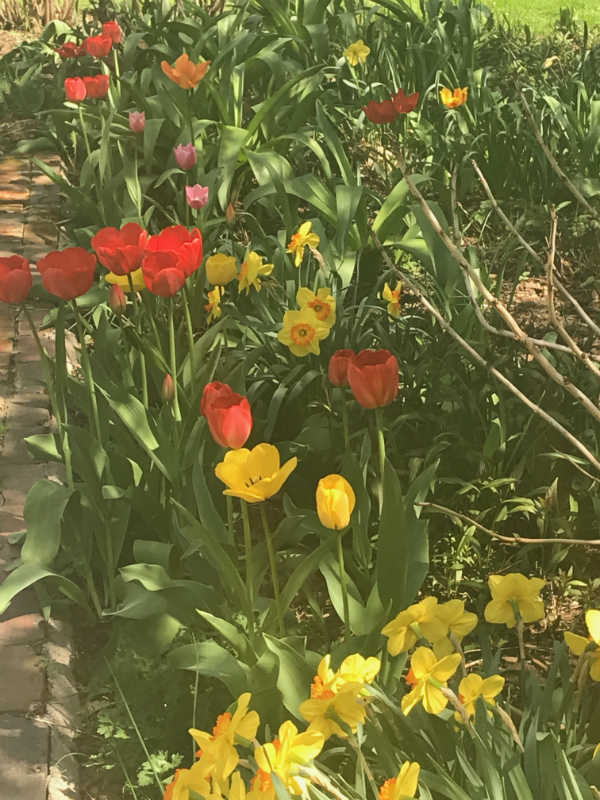
(Left) Clearly this line of daffodils is full and happy. As you can see behind the daffodils, the peonies are starting to come up. While this planting is beautiful now, had the daffodils been planted behind the peonies, the result would have been better.
The peonies would have served to hide the daffodil greens that must be left on after the daffodils finish their bloom. The green stems must be kept until they are brown to enable the energy to go back into the bulb. The way it is done here, sadly drives me crazy every year seeing the messy daffodil greens, and it continues to drive me crazy until they are brown and I can finally clean them up.
(Right) Bulbs are wonderful to cut and bring into the house. This space above is used as a cutting garden and is profuse with a variety of flowers. When cutting bulbs to bring in the house, remember that daffodils don’t mix well with other cut flowers. They are in the narcissus family and members of the narcissus family when cut produce a harmful stem clogging sap. The sap drains from the stems when you cut them and when the sap is absorbed by the other flowers, it will clog their stems thus shutting off their ability to stay hydrated.
If you want to mix Daffodils with other cut flowers, follow this procedure:
- Fill a container with cool water and add floral food. The water in the container should be shallow to avoid stem deterioration in the daffodils.
- Cut at least 1/2″ off of the daffodil stem and place in the container with the floral solution.
- Leave the daffodils in the container for at least 6 hours before mixing them with other cut flowers.
- DO NOT recut the stems when arranging them. Cutting them will once again release the sap.
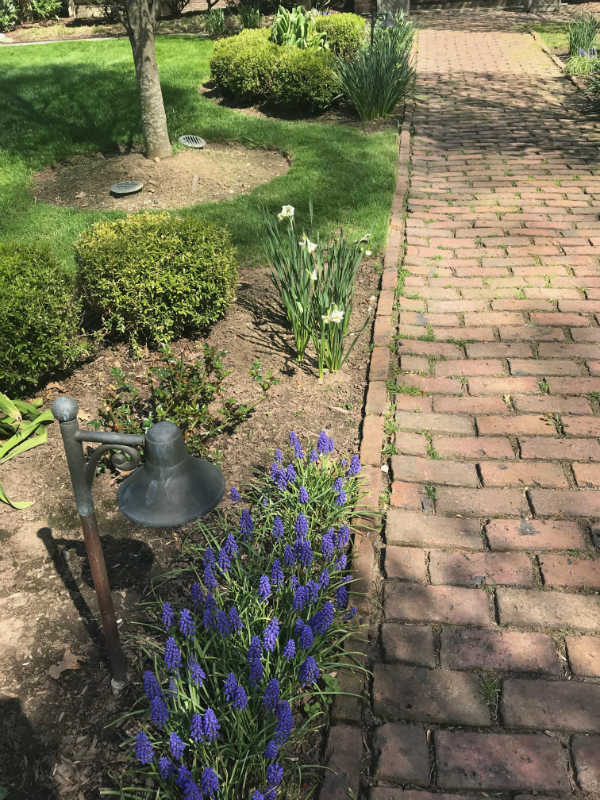
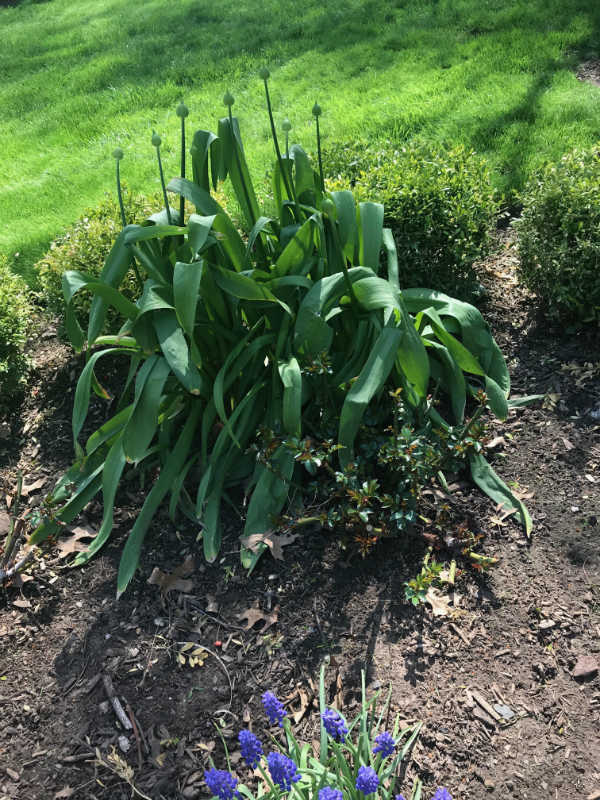
(Left) The photo above illustrates the perfect example of what I was referring to at the start of this post. You can see how over the years, some of these bulbs didn’t come back or have not come back as profusely and now more are needed to fill in.
(Right) Alliums are one of my favorite spring blooming bulbs though it is the flower and not the green that is the show stopper. Once the rose bushes fill in it will hide the greens of theses alliums which can be pretty unsightly.
Lastly it is just a good time to walk around and note where a good addition of bulbs would be.
I also think a very important view is the view from inside the house. What do you see when you look outside of the windows where you spend most time, probably for many of us it is in the kitchen? Would the addition of some bright yellow daffodils or a mix of tulips with some purple hyacinths just make the view all the more better?
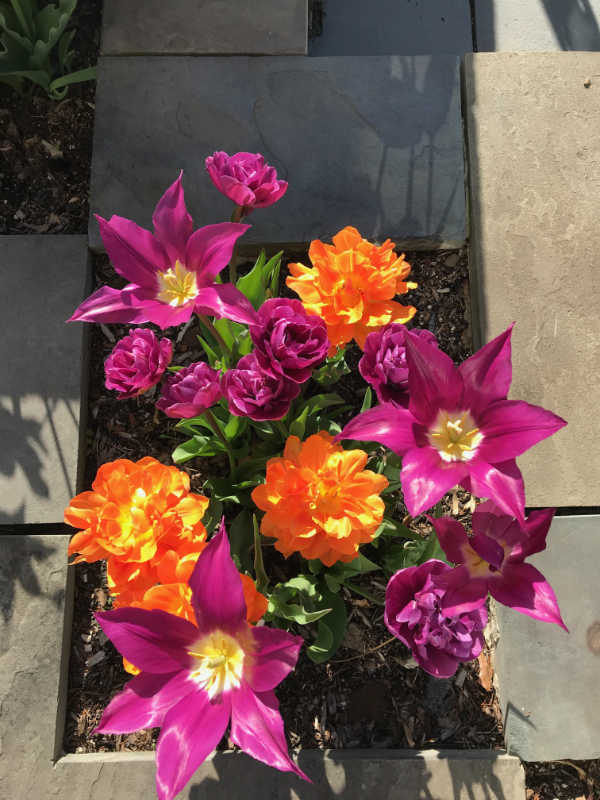
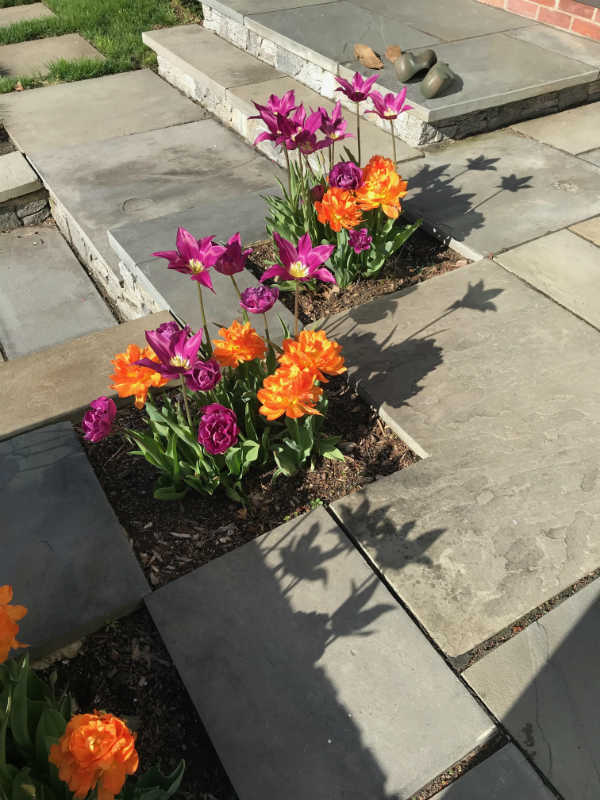
Spring still has it’s chilly days while I write this. It is gray and damp outside and a bit nippy, but the view from the window makes it clear that spring has finally sprung.
Happy spring…


The story of daffodils and peonies was very helpful
What a gorgeous first bloom, because of great planning. I wonder if the daffodils are part of the narcissus family because they are flowers that need to be on their own (narcissists by any chance?), probably just a funny coincidence.
How I wish I had had your expertise while I was living in a house with a garden.
I love to read your posts.
xoxo